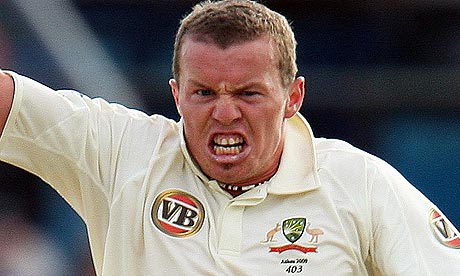-
Welcome to the Cricket Web forums, one of the biggest forums in the world dedicated to cricket.
You are currently viewing our boards as a guest which gives you limited access to view most discussions and access our other features. By joining our free community you will have access to post topics, respond to polls, upload content and access many other special features. Registration is fast, simple and absolutely free so please, join the Cricket Web community today!
If you have any problems with the registration process or your account login, please contact us.
***Official*** Australia in South Africa
- Thread starter Spark
- Start date
ganeshran
International Debutant
Oh, I can stop laughing.Not in range.

Shri
Mr. Glass
Predicting Aus to get to 45-50 before being bowled out.

Agent Nationaux
International Coach
All gone now. Let's see what the choke machine does from here on now.
SJS
Hall of Fame Member
We can discuss this at length later but let me just say that the art of batting on difficult wickets is (or used to be) to move decisively front or back but not commit the bat till the last nano second and leave everything that was not going to hit the stumps PLUS the balls that were going towards the stumps not to be played with anything but the straightest of bats.Most every ball is doing something mate, some extravagant, often just enough.
How many batsmen did we see doing that? Cant blame them for test match batting , specially test match batting on difficult wickets is not a practiced art any more. Gavaskar at Bangalore in his last test innings is the last I remember.
As for playing straight (t balls hitting the stumps) on a wicket with lateral movement and up and down bounce, we saw the great Sachin continue to play the straight balls on a very low bounce wicket to square leg and behind and again and again looking like an lbw candidate. Playing the same balls to the direction of mid on or straightish mid wicket would get the ball in the middle of the bat. And we are talking of THE modern day great.
This is not to underplay the difficulty of playing on a wicket with lateral movement but to highlight that you need a different type of batting technique to survive those type of conditions . . .
Hobbs, Sutcliffe and Jardine on a sticky for an hour or two won a match and a series once just by surviving remember . . . . There are rarely unplayable wickets, there are just wickets that are easy to bat on, difficult to bat on and very difficult to bat on and for the latter ones you need special technique.
Starting with the covering of the wickets and then with the doped wickets of the limited overs era we have just allowed that art to go out of the game. Its not new. Bradman decided in the 1920's and 1930's that such wickets are going to be so rare that he would rather mot change his technique while Hobbs whose career started 20 years ago and who played most of his cricket in wet England learnt and became a past master at it.
This is again not to criticise the modern day batsmen but to impress the point that those who batted in times of uncovered wickets had some special problems to over come.
Last edited:
hahahathank **** we have you here to give us the run down on what's happening all around the internet.
intcricket
U19 12th Man
Ya Allah, Peter Siddle, the greatest Australian batsman since Donald Bradman. 
He stayed not out and showed the world his true caliber.
Take a bow.

^ Doesn't look too happy

He stayed not out and showed the world his true caliber.
Take a bow.

^ Doesn't look too happy

benchmark00
Request Your Custom Title Now!
@SJS - cliffs?
Guido Hatzis
Cricket Spectator
should me amazing to watch this 4th innings... bookmakers have this as a coin flip.
flibbertyjibber
Request Your Custom Title Now!
Well if Lyon has to anything else in the match apart from take a catch then the Aussies are stuffed. Decent batting from him though.
What a mad few hours that has been.
What a mad few hours that has been.
Andre
International Regular
intcricketWhat does Out of range mean?
